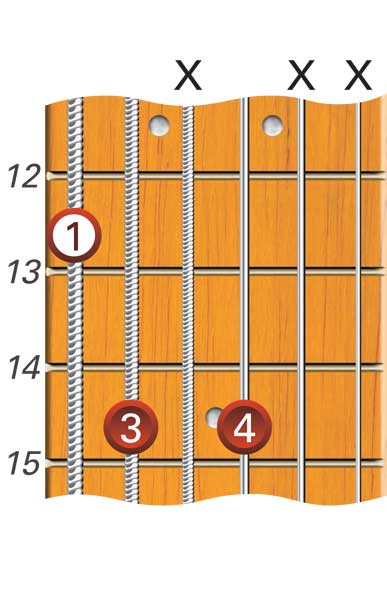
Movable Chords
Here are some of the most commonly used three note open voicings, and four note voicings of suspended chords. Each voicing is shown as an Fsus chord, and as always they can all be transposed to 11 other keys by locating the appropriate root note.
Fsus

Fsus

Fsus

Fsus

Fsus

Fsus

Fsus

Fsus

Fsus

Fsus

Fsus

Fsus

Fsus

Fsus

Fsus

Fsus

Fsus

Fsus

Fsus

Fsus

Fsus

Fsus

Fsus

Fsus

The following progression uses a second inversion suspended chord shape on the first three strings which is derived from the open D form. The shape is simply moved up the fretboard to change between the chords.


Major Flat Five


As its name suggests, a Major flat five chord can be created by flattening the 5th degree of any major chord. For example, a C major chord contains the notes C, E and G, (1, 3 and 5) while a C-5 chord contains C, E and Gb, (1, 3 and b5). The following diagram shows some common open major flat five chord shapes.